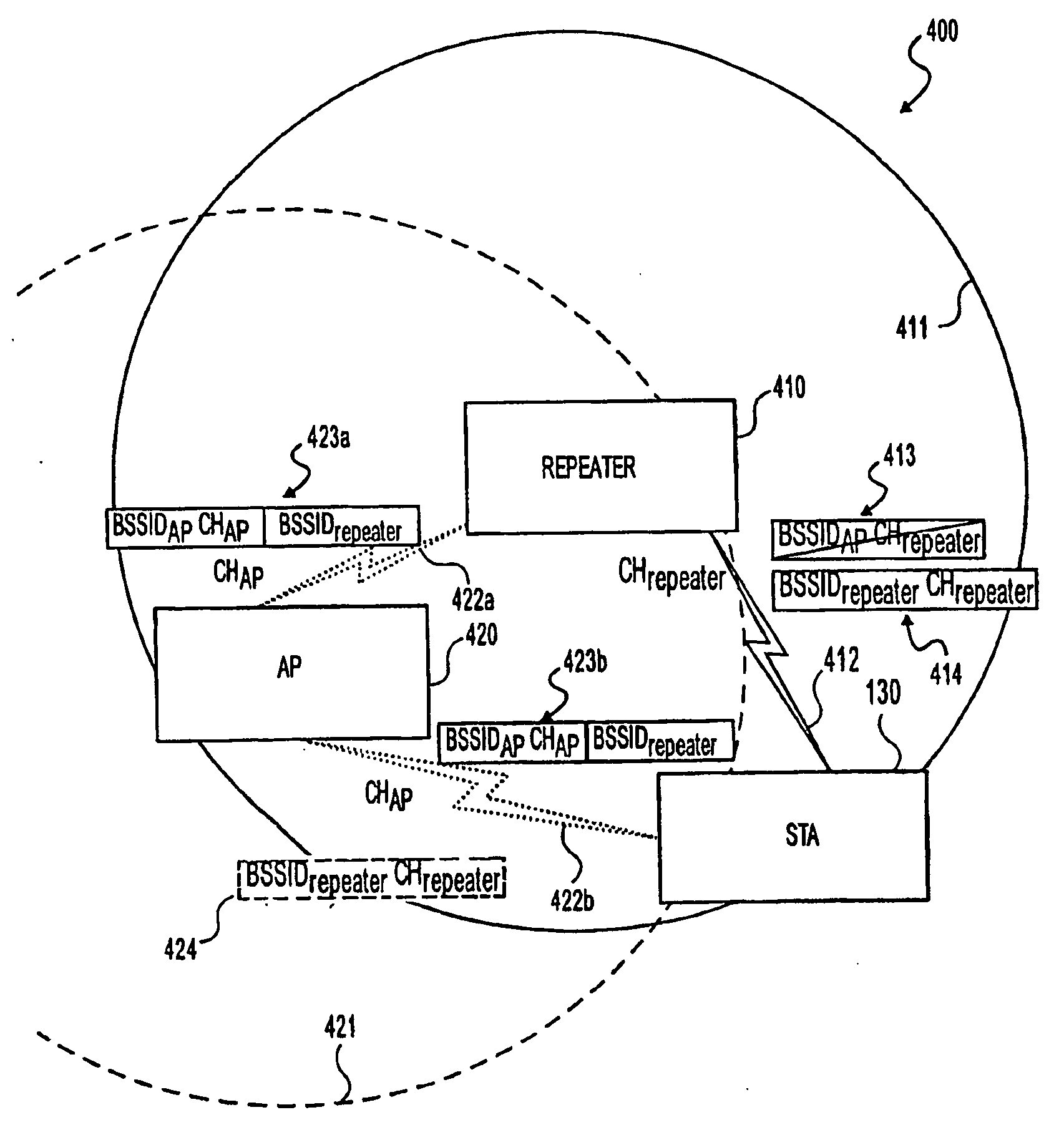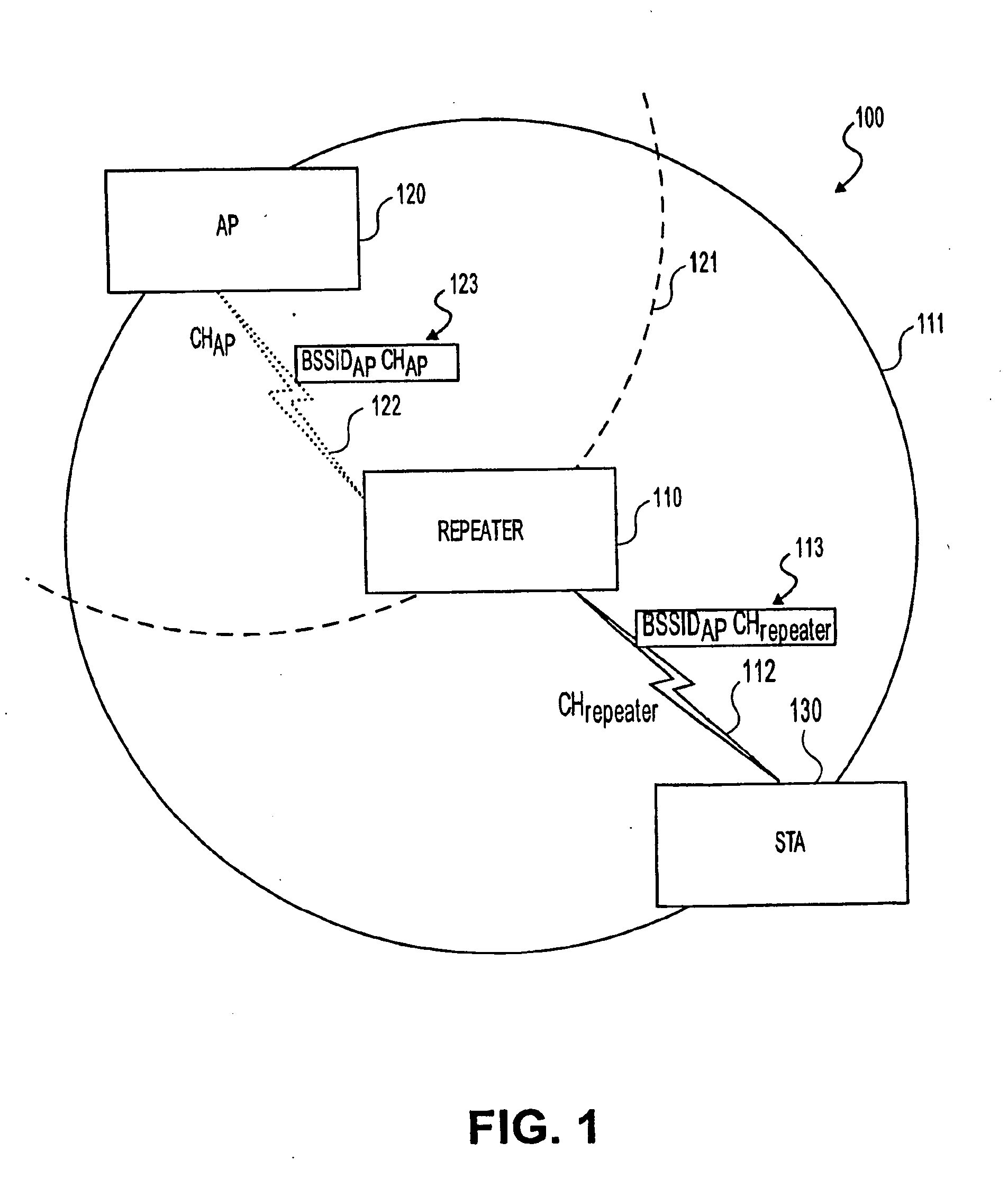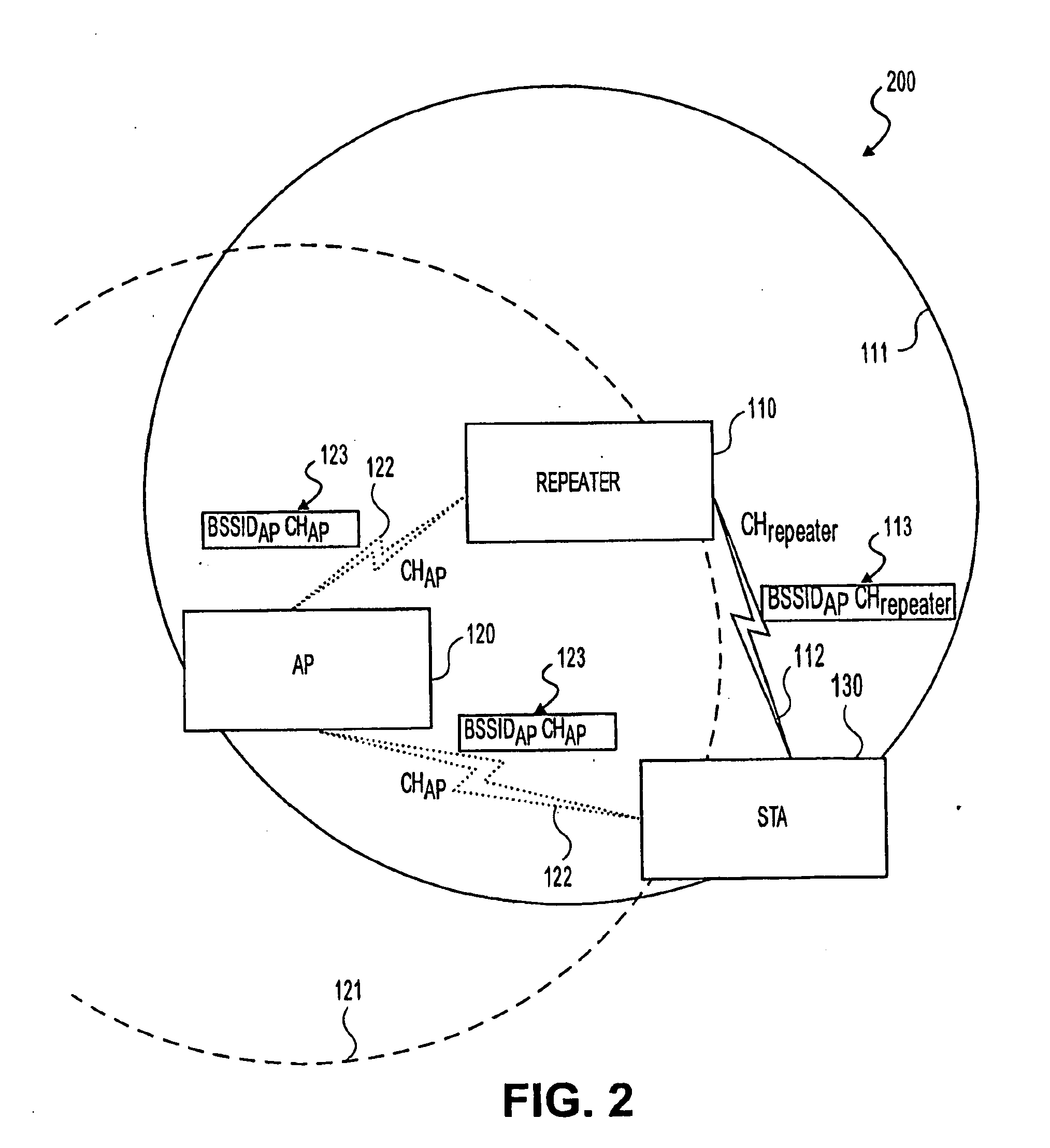Physical layer repeater with roaming support based on multiple identifiers
a repeater and multiple identifier technology, applied in the field of physical layer repeaters, can solve problems such as reducing the overall ease of use, compromising security features, and affecting detection accuracy, and achieve the effect of facilitating detection
- Summary
- Abstract
- Description
- Claims
- Application Information
AI Technical Summary
Benefits of technology
Problems solved by technology
Method used
Image
Examples
Embodiment Construction
[0026]In accordance with various embodiments, exemplary repeaters such as 802.11 repeaters can extend the range of a given 802.11 Basic Service Set (BSS) by performing a cross-channel repeating function at the baseband level with little or no signal modulation / demodulation resulting in very fast, low latency repeating while minimizing the silicon circuitry requirements, and providing a relatively inexpensive product solution.
[0027]To better understand the impact of the problems described above in the art, common station initialization and roam procedures are described herein below. At initialization-time or when a roam or BSS transition is indicated, a typical 802.11 station is configured to perform the following sequence of actions. First, a channel scan is performed to “sweep” the available channels. The exemplary receiver can be programmed to listen on each channel for a specified dwell time to build a table of known BSSs by listening for an 802.11 beacon frame and, optionally, a...
PUM
 Login to View More
Login to View More Abstract
Description
Claims
Application Information
 Login to View More
Login to View More - R&D
- Intellectual Property
- Life Sciences
- Materials
- Tech Scout
- Unparalleled Data Quality
- Higher Quality Content
- 60% Fewer Hallucinations
Browse by: Latest US Patents, China's latest patents, Technical Efficacy Thesaurus, Application Domain, Technology Topic, Popular Technical Reports.
© 2025 PatSnap. All rights reserved.Legal|Privacy policy|Modern Slavery Act Transparency Statement|Sitemap|About US| Contact US: help@patsnap.com



